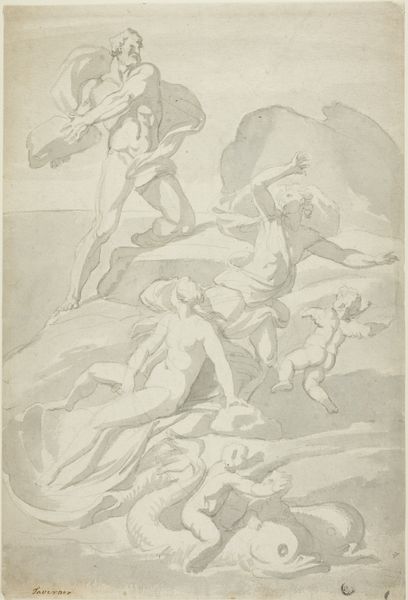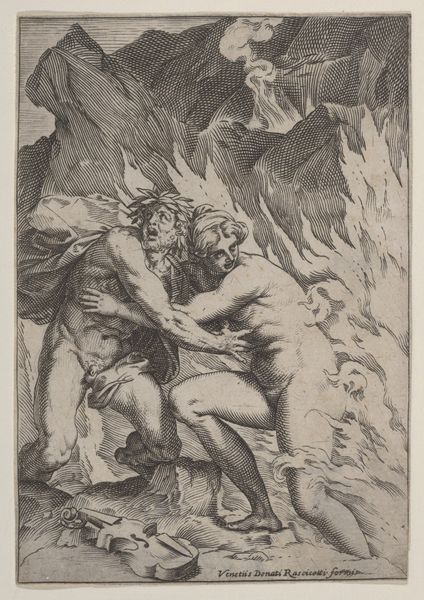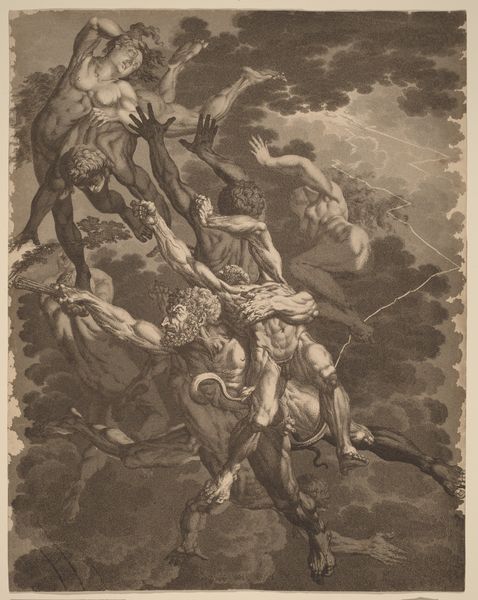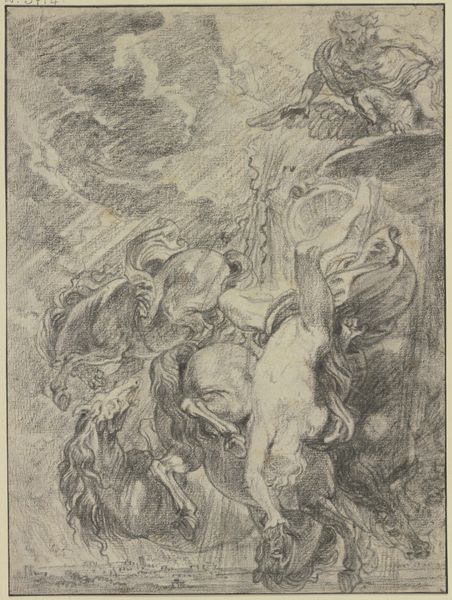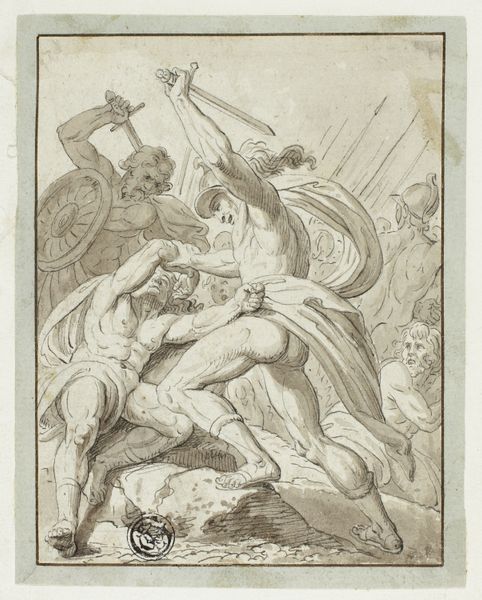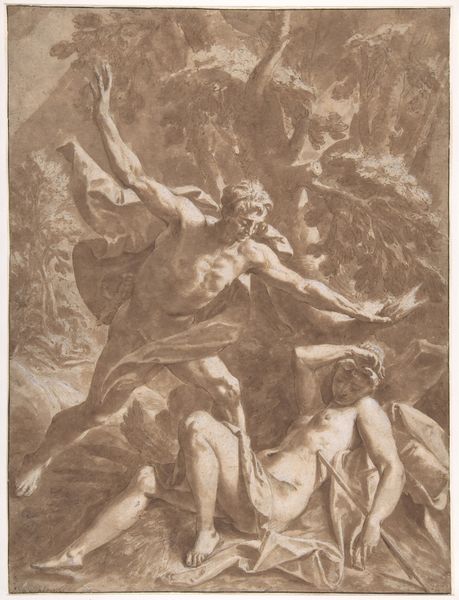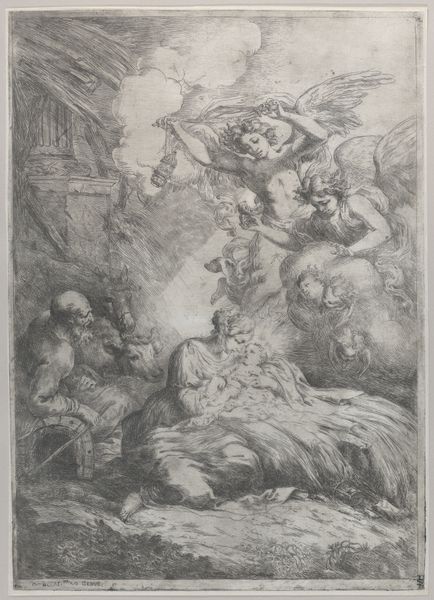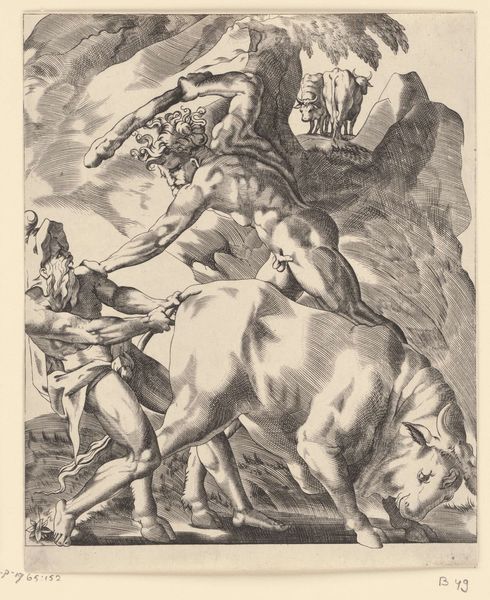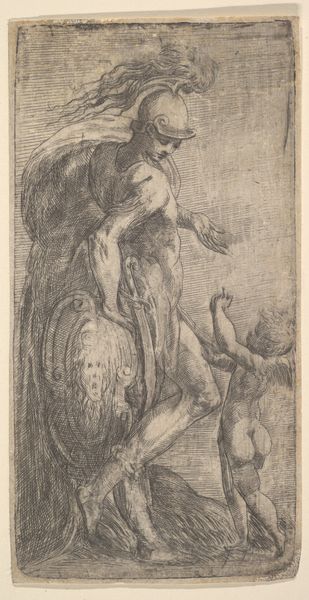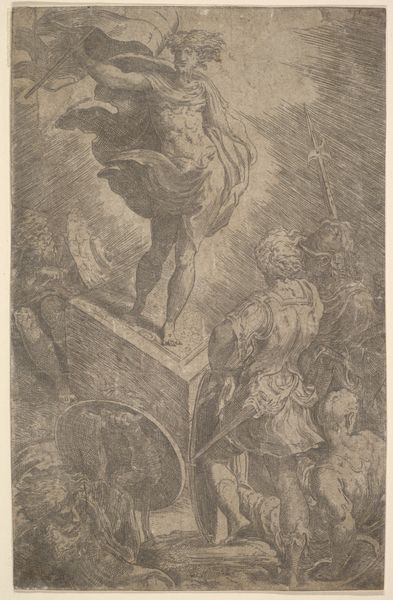
drawing, print, etching
#
drawing
#
baroque
# print
#
etching
#
figuration
#
history-painting
Dimensions: height 203 mm, width 161 mm
Copyright: Rijks Museum: Open Domain
Curator: This is a print, "Aartsengel Michaël in gevecht met de duivel," or "Archangel Michael in combat with the devil," made between 1628 and 1659 and currently held at the Rijksmuseum. Giovanni Pietro Possenti is credited with its creation, working primarily in etching. Editor: The dynamism of this print is striking! The energy between the two figures is palpable, even though the lines are so delicate. It's very much a dance between the two figures, but it feels precarious; as though a single gust of wind would break it apart. Curator: The physicality of the combat is important to note here. We see Michael poised to strike the devil, pinning him. There's such weight bearing down on his opponent, but how was this rendering of religious dogma produced materially? Look closely at the etching: it is created through controlled corrosion of the plate. The consumption of the plate enacts what we see depicted in image and what viewers also participate in. Editor: I agree, there's a complex, perhaps disturbing, choreography here that invites our attention. I am interested in the scales held by the angel. Scales often stand for justice, righteousness, discernment, or perhaps weighing a life and deciding its fate, although here he is depicted to fight the devil. How were viewers intended to feel with the image of him using those scales? Were they symbols to provide hope and encouragement in their everyday lives? Curator: Absolutely. And the distribution of prints like this allowed the dissemination of this imagery far beyond the elite circles of painting or sculpture. Through reproducible technologies like etching, more access to understanding the symbolic narratives. In our world where material waste and recycling dominates, Possenti shows us a way in which cultural meaning can exist beyond material worth. Editor: Yes, I’m so intrigued by the power of enduring images, and the meanings they continue to accrete. These iconographic systems truly reflect deep societal beliefs about power, morality, and our ongoing struggles. Curator: For me, I'm struck by how the production mirrors its content, the constant reworking of metal, whether literal or symbolic, leading to constant new meanings, interpretations. Editor: That’s fascinating. It encourages us to contemplate these iconic stories again and perhaps interpret them in light of our contemporary concerns and experiences.
Comments
No comments
Be the first to comment and join the conversation on the ultimate creative platform.

